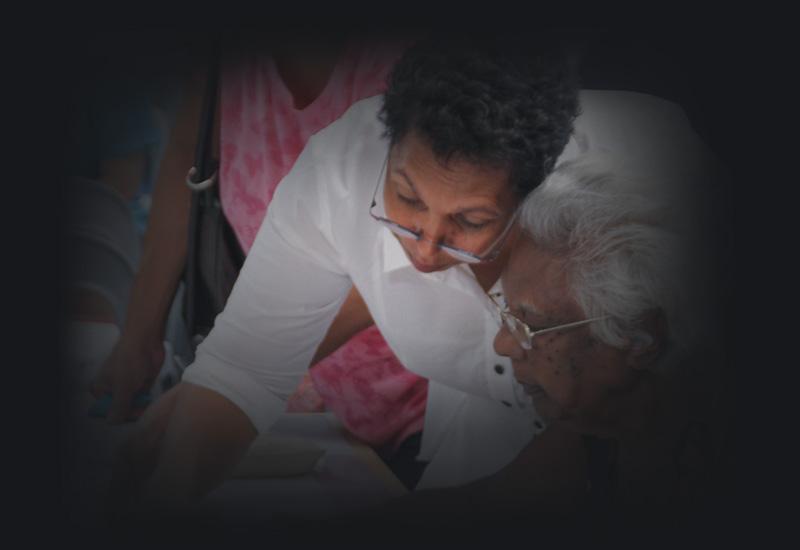Archival records are so powerful. I cannot begin to emphasise that. You know, experiencing that personally and seeing the impact of other people as well.
I'm Phyllis Williams. I'm Director, Aboriginal Torres Strait Islander Engagement with National Archives of Australia.
I came to the National Archives back in 1996. It was at the request, or perhaps I should say it was demanded by somebody who I had known all my life. And so I got a call from her saying to me, 'Need you to go and work in the Archives because it's so important for us, for our people.
I've often thought of myself as an accidental public servant who came to the National Archives with a focus and a purpose to assist Aboriginal and Torres Strait Islander people to connect and link up with their families. But I say it to all people, 'Remember, you have not come from nowhere. We've all come from somewhere. It's just that some people don't know those connections.'
I want to be a part of assisting people to find those connections. It's important for all of us, not only Aboriginal people, non-Aboriginal people as well, to know where we've come from. That's the main thing about being human.
The National Archives Collection extends to over 40 million items. However, the titles of files don't give an indicator of what the content of the information is about. And so this is the reason why people keep coming back in the hope that there is that extra bit of information that will secure for them the connection that they need to close off their inquiries about themselves and about their connection to community and to heritage as well. In providing that connection, it provides evidence. It's so important. It supports what we say verbally and coming from an oral history that can only help us even more.
The collections of the National Archives, and in particular the Larrakia petition, is very important, not only for my family but for Larrakia people. The National Archives has provided a copy of the Larrakia petition to the Larrakia Nation, and we had a handover event back in 2013. So the petition was put together by the Gwalwa Daraniki Association, and its intention was to present it to Princess Margaret when she was here on the 17 October 1972. In the attempt to hand over the petition, there was a struggle and the petition had been ripped.
People who were handing over the petition managed to get it back and sticky tape it together and sent it off to the Queen. So coming from England, Buckingham Palace back to Australia, and then it's ended up in the collection of the National Archives of Australia. The National Archives has digitised that file and also the petition, so anyone anywhere in the world can have access to that record. It's very, very powerful being able to see that petition laid out, seeing the thumbprints and the crosses of the people who had signed the petition and who appreciated and understood that there was this struggle for recognition of land rights going on here.
Larrakia peoples and families were invited to come along and have a look at the copy of the petition here at the Northern Territory Archive Centre. My mother was one of those people, and my mother asked to be placed beside the petition so that she could sit down and have a look. And unbeknownst to her, her auntie had a crossed and marked the petition with her cross and also her thumbprint, and somebody had handwritten her name beside it. And by chance, my mother sat down right at that spot.
What was really, really moving for us is my mother being able to touch. My mother had nothing else actually of my great aunt other than that, and so mum kept on putting a hand over the top of that. So, it was a connection back, if you like. It's very, very hard to describe the emotions that go with that to express to people that the voices and the hand prints of my people, my ancestors are in archival records, and it's important for institutions like archives to continue to safeguard and preserve the collections. Again, I can't begin to emphasise enough how important that is.
Focusing on archives or archives re-looking at its engagement with indigenous peoples, and also to consider where further barriers may be, where worldviews, bring in indigenous worldview and indigenous considerations, and this may extend to the physical spaces. It's not only about people coming in to us, but it's also us going out and interacting with people as well. So breaking down that type of barrier and not being taken back when a family group of four or six or eight people turn up unannounced. This is the way that Aboriginal Torres Strait Islander people are.
It's about collective identity – that's how culture is. And it's not going to change just because of 200-odd years.
I've been one of the doers of change, to do what we think and what we've experienced needs to be done. I love that there is difference. I love that we're all different and also what our difference can bring.
I was born here, raised here. My roots are here, my connections are here at every level. It's in this country here. I relate to the seasons, relate to the landscapes. Everywhere else in the world is either too busy, too cold, too hard to get to.






